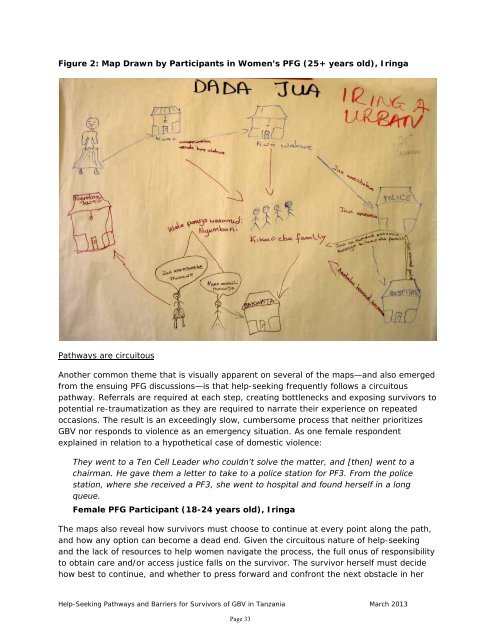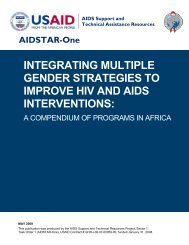Download PDF - ICRW
Download PDF - ICRW
Download PDF - ICRW
Create successful ePaper yourself
Turn your PDF publications into a flip-book with our unique Google optimized e-Paper software.
Figure 2: Map Drawn by Participants in Women’s PFG (25+ years old), Iringa<br />
Pathways are circuitous<br />
Another common theme that is visually apparent on several of the maps—and also emerged<br />
from the ensuing PFG discussions—is that help-seeking frequently follows a circuitous<br />
pathway. Referrals are required at each step, creating bottlenecks and exposing survivors to<br />
potential re-traumatization as they are required to narrate their experience on repeated<br />
occasions. The result is an exceedingly slow, cumbersome process that neither prioritizes<br />
GBV nor responds to violence as an emergency situation. As one female respondent<br />
explained in relation to a hypothetical case of domestic violence:<br />
They went to a Ten Cell Leader who couldn’t solve the matter, and [then] went to a<br />
chairman. He gave them a letter to take to a police station for PF3. From the police<br />
station, where she received a PF3, she went to hospital and found herself in a long<br />
queue.<br />
Female PFG Participant (18-24 years old), Iringa<br />
The maps also reveal how survivors must choose to continue at every point along the path,<br />
and how any option can become a dead end. Given the circuitous nature of help-seeking<br />
and the lack of resources to help women navigate the process, the full onus of responsibility<br />
to obtain care and/or access justice falls on the survivor. The survivor herself must decide<br />
how best to continue, and whether to press forward and confront the next obstacle in her<br />
Help-Seeking Pathways and Barriers for Survivors of GBV in Tanzania March 2013<br />
Page 33

















